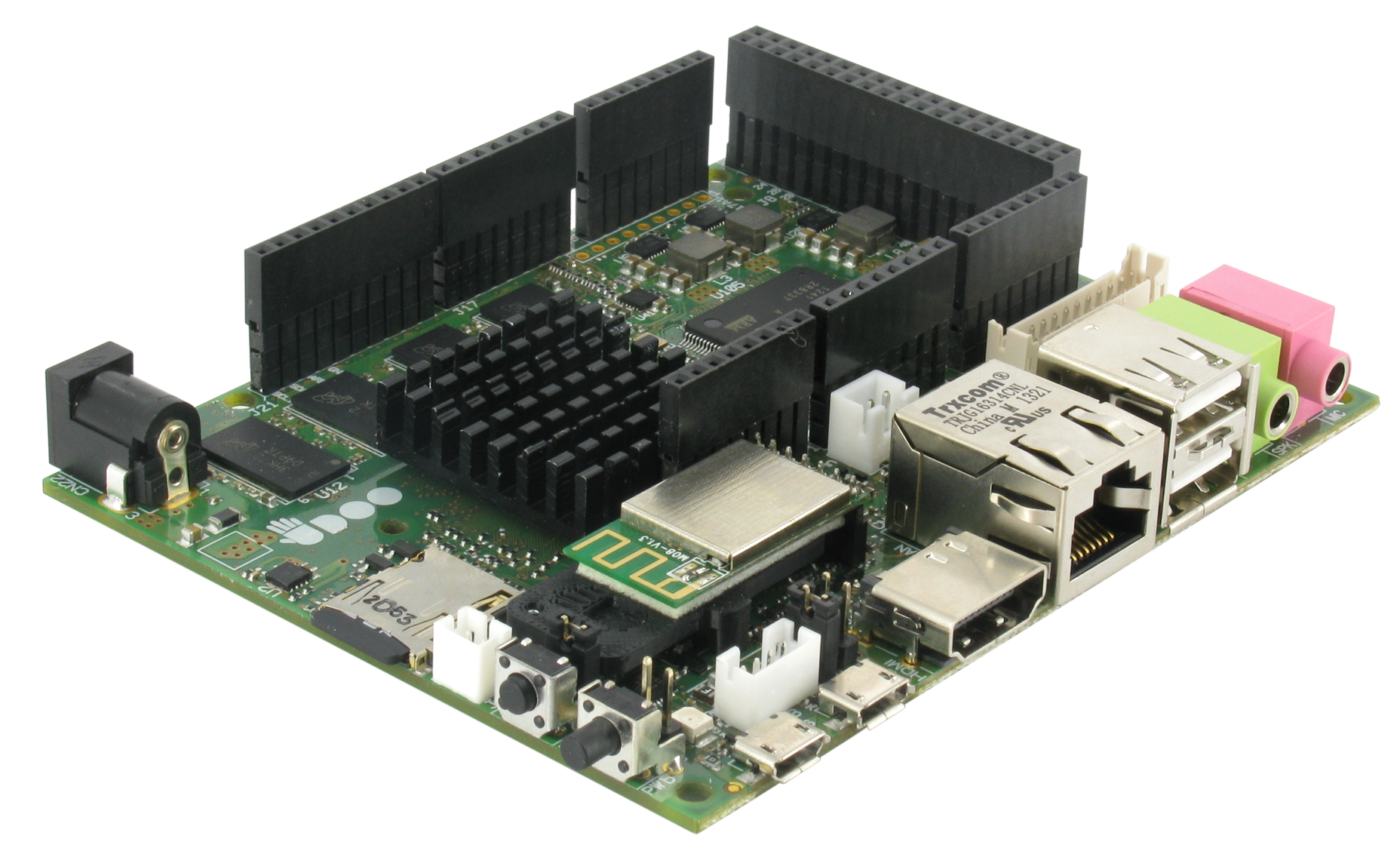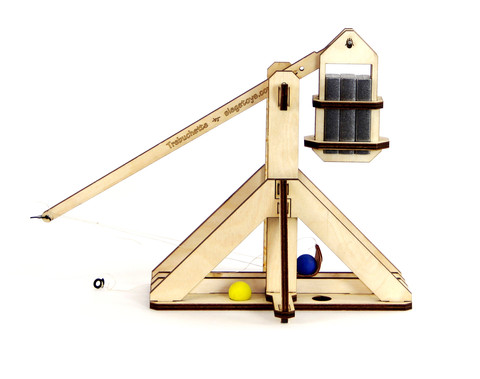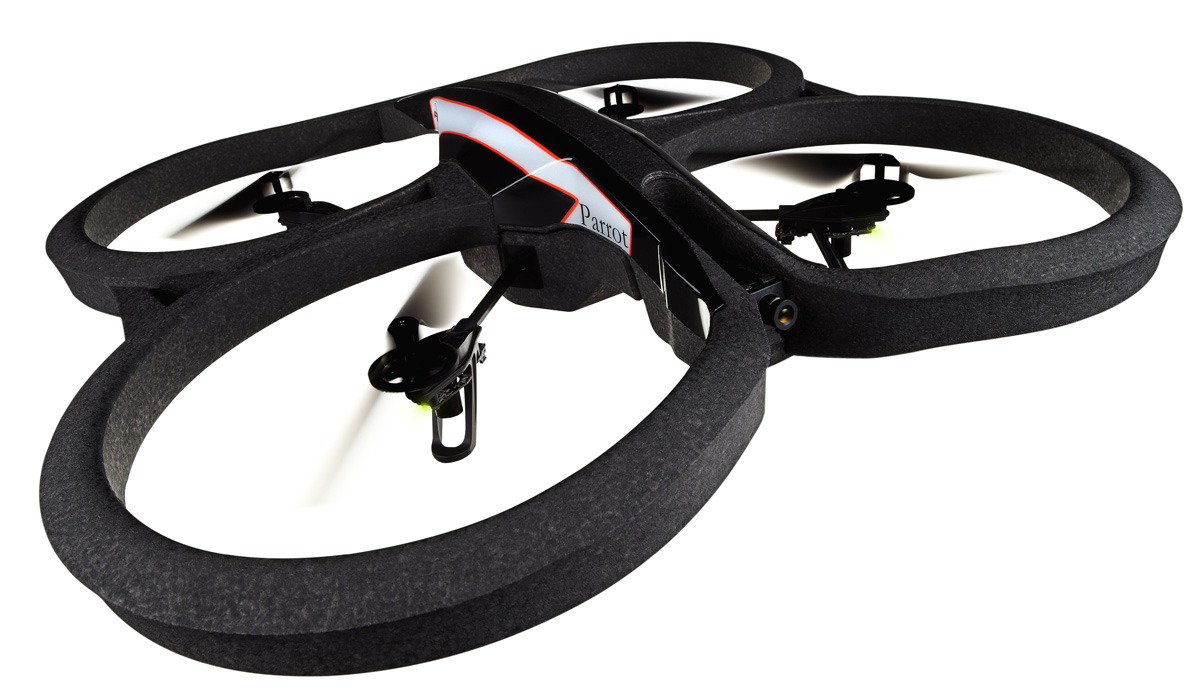
Friends, the moments are ticking away and it won’t be long at all before your tranquil living rooms turn into wrapping paper-strewn war zones. What’s that? You haven’t done your shopping yet?
Well, we’ve decided to take a quick break from our more thematic gift guides and give you the straight dope on the gadgets and gifts that just make our lives a little better. Read on for a glimpse of what really tickles our fancies, warms our cockles, and drains our bank accounts.
John Biggs:

Time-it T-Block Full Black Watch
$190
Nerdy watches are my kind of thing and the Time-it T-Block is the nerdiest. At less than $200 it’s a great looking watch with a nice retro-Information Society feel. The watch shows the time by lighting up a series of bright red LEDs and the case and band make one fluid whole. If you’re dressing like Neo at all this year, this is probably the watch for you. It also comes with a blue and yellow band, but I think black is best.

Udoo Raspberry Pi/Arduino Mashup
$99
Shopping for a tinkerer? The Udoo Raspberry Pi/Arduino board is just right. It runs its own version of Linux and can directly control a set of dedicated digital and analog I/O ports. It’s a great experimental platform and allows you to add some very cool real-world interactivity to your Raspberry Pi projects. It’s not quite for the faint of heart but it’s amazing fun when you get it started up and you start blinking LEDs with reckless abandon.

The Trebuchette
$39.95
Go to war against your cubicle mates with the Trebuchette, a working, desk-based trebuchet designed to crush your enemies, see them driven before you, and to hear the lamentation of their electric pencil sharpeners. The DIY kit is made of wood and comes with all the pieces you need to lay siege to Pam-alot.
Matt Burns:

Parrot A.R.Drone 2.0
$299
At worst, the Parrot A.R.Drone 2.0 is a fantastic toy. At best, it’s a device that will show the masses the appeal of drones. The Parrot A.R.Drone is a fully-capable drone, able to reach incredible heights and speeds and it’s controlled by just a smartphone. There is a learning curve and it’s definitely an outdoor toy. Still, after 30 minutes of wobbling around the yard, you’ll have the drone soaring like as if controlled by Skynet. It’s a fantastic gift for you or your kin.

IOGEAR GearPower
$20-$50
There are countless mobile battery solutions on the market. But I have yet to find one as bulletproof and affordable as the IOGEAR GearPower. It’s dead simple: two USB outputs, recharges by microUSB and sports just one button that kicks on the power and displays the remaining battery capacity.
Best of all, this battery is often dirt cheap on Amazon and comes in various sizes. The 11,000 mAh flavor can sometimes be had for as low as $28.99 on Amazon while the 7,000 and 2,400 variations are also priced relatively low. It’s a boring gift, sure, but a gift that will surely be used by anyone addicted to their smartphone.

FitBit Force
$129
I’ve tried nearly every smart device on the market, but the FitBit Force is the only one I still use. It’s the perfect size. The battery lasts over a week and it functions beautifully as a simple watch. My expanding waistline is testament to the fact that simply wearing a health tracker will not cause you to lose weight. However, since the Force is much more than a connected pedometer, it’s managed to work its way into my life as something I wear 24/7.
Darrell Etherington:

Kindle Paperwhite
$119
Amazon makes a mighty fine e-reader, and that hasn’t changed even as it started pouring more resources into its Android-based tablets. These kids with their Alanis Morissette and their TurboGrafx 16s might be okay with reading books on backlit LCD displays, but I’ll stick with e-paper like God intended, thank you very much. The latest generation is a refinement on last year’s model, but it does manage to truly refine things in every way that matters.

Anker USB 3.0 7+2 Port Hub
$44.99
USB hubs are possibly the least sexy gift you can get someone, but also the most useful. This one by Anker has been a stalwart, with two dedicated charging ports that offer both 2.1A and 1.5A 5V charging to power up your iPad and your iPhone or Android device at maximum speed. Little lights indicate what ports are currently in use so you can tell if you have defective or undetected equipment, and the design is actually not offensive or garish, which is rare in these things.

Philips Hue
$199.95
Call me a weirdo but I really like these lights, and will slowly blanket my entire house with them as budget allows and as Philips continues to introduce new models that are compatible with all my various sockets. Heck, I’d use one in my oven if it was rated for that. If I have a complaint, it’s that the app maybe isn’t as good as it could be, but Philips just updated its software for iOS 7 and it no longer requires you to turn your phone into landscape orientation to change the color/tone of your bulbs.
Chris Velazco:

Nintendo 3DS XL
$199
I know, I know: mobile gaming is the new frontier and there’s no shortage of gadgets out there that can turn your smartphone into something approaching a real gaming console. Call me an anorak, but until we start seeing seriously top-tier franchises earnestly migrate over to mobile I’m more than happy to tote around a separate device meant solely for catching Pokémon or navigating the wilds of Hyrule.

PhotoJojo Smartphone Lens Sampler
$49.99
You can throw as many filters and effects on a photo as you want, it’s no substitute for a bit of shaped glass that sits in front of your lens. There’s no shortage of these little things floating around out in the e-commerce ether but I’m particularly fond of the ones from PhotoJojo — I’d much rather have a magnetic ring sitting around my phone’s lens for the rest of its days than, say, a hefty clip sticking of the end of it.

Digital Calipers
$16.99
Easily the curveball of the group. I originally bought one of these for use with phone reviews until I realized that they just weren’t all that necessary to the process… so I started measuring other things instead. And by other things, I mean everything. Seriously, I think I have a problem.
You can check out our complete Holiday Gift Guide 2013 right here.






 The creators of the Iron Man project are a team with an injection moulding factory out of Shenzen, the company tells me, including engineers with over 15 years experience in die casting manufacturing. The factory employs between 30 and 40 people, and currently produces toys, routers, smartphone parts and more. They’ve been working with designers in Beijing on the Iron Man project, and began producing small runs of the Iron Man helmet alone via 3D printing. To get costs down and volumes up, they’re looking to cover the costs of initial setup for a full-scale, injection moulding production run.
The creators of the Iron Man project are a team with an injection moulding factory out of Shenzen, the company tells me, including engineers with over 15 years experience in die casting manufacturing. The factory employs between 30 and 40 people, and currently produces toys, routers, smartphone parts and more. They’ve been working with designers in Beijing on the Iron Man project, and began producing small runs of the Iron Man helmet alone via 3D printing. To get costs down and volumes up, they’re looking to cover the costs of initial setup for a full-scale, injection moulding production run. The company also tells me that it’s working on a space-grade aluminum version of the suit, too, which it plans to put into mass production provided the initial campaign is successful. They declined to comment on licensing, indicating this isn’t a project with Marvel’s official blessing, but that probably won’t stop the superfan from drooling over this. And yes it’s $2,000 and it doesn’t even fly, but imagine the faces the next time you walk the con floor.
The company also tells me that it’s working on a space-grade aluminum version of the suit, too, which it plans to put into mass production provided the initial campaign is successful. They declined to comment on licensing, indicating this isn’t a project with Marvel’s official blessing, but that probably won’t stop the superfan from drooling over this. And yes it’s $2,000 and it doesn’t even fly, but imagine the faces the next time you walk the con floor.








